When you’re out in the wild, surrounded by mountains, forests, or lakes, one thing becomes crystal clear—good food can make or break the experience. Forget the days of lugging around bulky propane tanks or dealing with smoky campfires that leave your gear smelling like charcoal. Enter Battery Powered Camping Stoves, the game-changing gear for outdoor adventurers who crave efficiency, compactness, and reliability. These innovative stoves are lightweight, portable, and powered by rechargeable batteries or power banks, giving you a cleaner and safer way to cook anywhere, anytime.
Whether you’re planning a weekend camping trip, backpacking through the wilderness, or setting up a cozy outdoor picnic, these stoves bring modern convenience to nature. Let’s dive deep into why Battery Powered Camping Stoves are rising in popularity and how they can transform your next adventure.
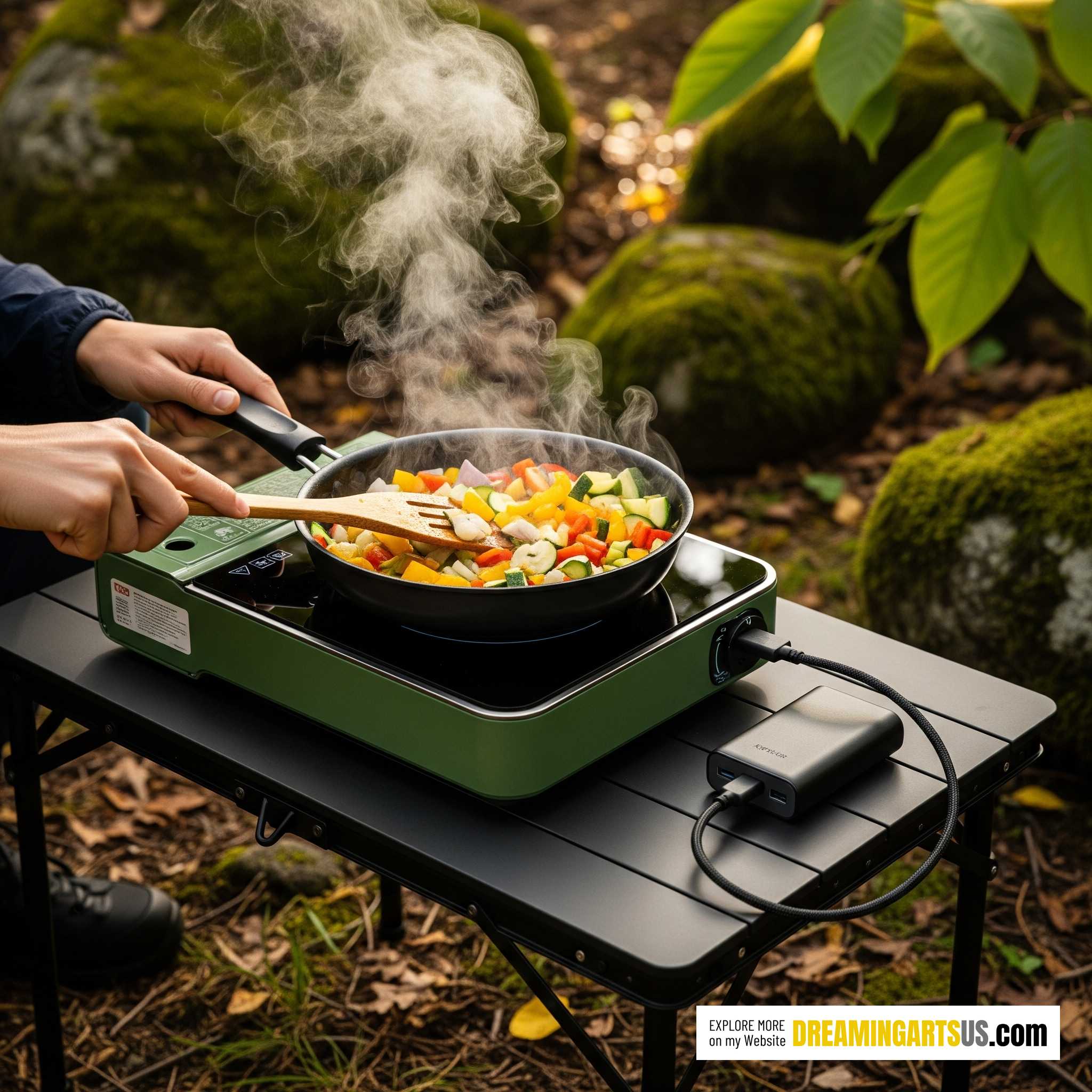
The Evolution of Camping Stoves
Traditional camping stoves usually relied on propane or butane fuel canisters. While effective, they came with limitations—extra weight, the risk of leaks, and the constant need to carry replacement fuel. On the other hand, Battery Powered Camping Stoves eliminate many of these hassles. They use portable power solutions such as lithium-ion batteries, solar-charged packs, or USB power banks, offering sustainable, lightweight, and travel-friendly options.
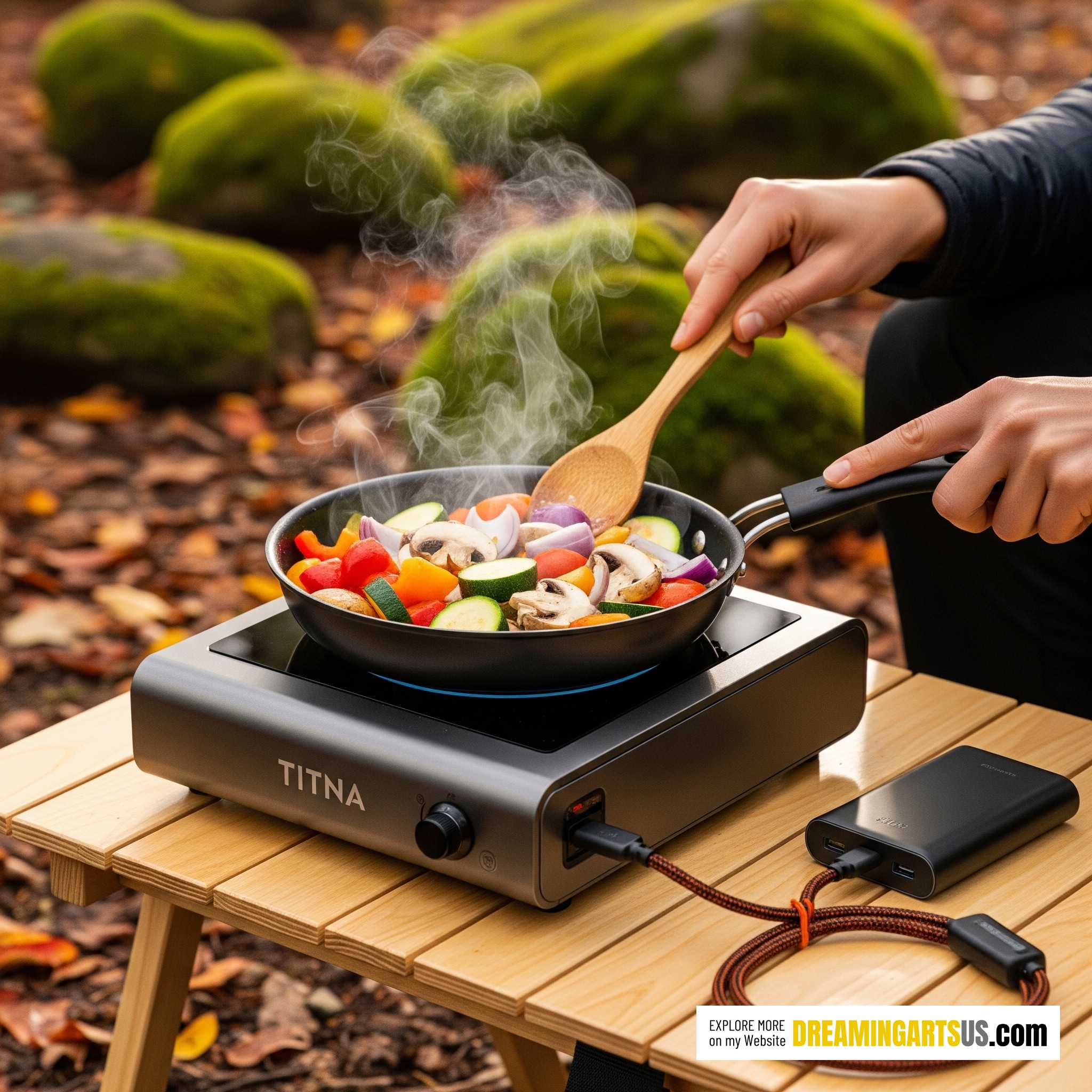
This shift from fuel-based to battery-powered design reflects today’s eco-conscious and tech-driven camping culture. No more worrying about carrying dangerous fuel or running out in the middle of nowhere. With a fully charged power bank, you’re set to fry, boil, or simmer your meals under the stars.
Why Choose Battery Powered Camping Stoves?
1. Portability and Compact Design
Most Battery Powered Camping Stoves are lightweight and compact, perfect for backpackers and campers who prioritize minimal gear. Their slim, foldable, or modular designs make them easy to pack without adding unnecessary bulk.
2. Safe and Clean Cooking
Unlike gas stoves, these stoves don’t release harmful fumes. You can use them indoors in a van, tent vestibule, or tiny cabin without worrying about carbon monoxide risks. Plus, no accidental fuel spills.
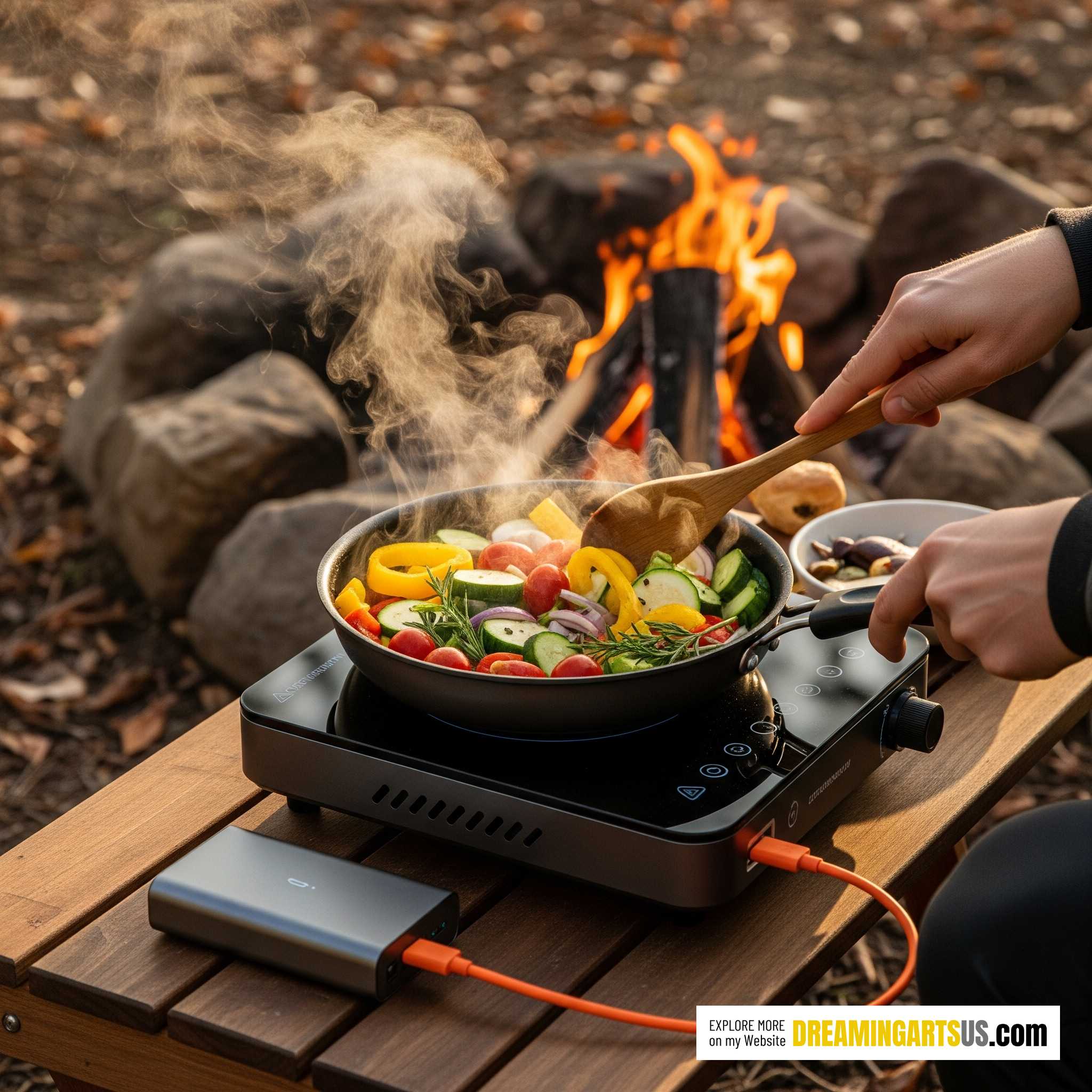
3. Eco-Friendly and Sustainable
Pair a battery-powered stove with a solar charging panel, and you have an endless cooking solution. This not only reduces waste but also aligns with eco-friendly camping practices.
4. Reliable Power Source
Most stoves can be powered by versatile sources—USB power banks, rechargeable lithium batteries, or solar generators. This flexibility ensures you won’t run out of cooking options as long as you keep your power charged.
5. Ease of Use
With intuitive touch controls or simple knobs, Battery Powered Camping Stoves are user-friendly. No lighters, no tricky setups—just plug, power, and cook.
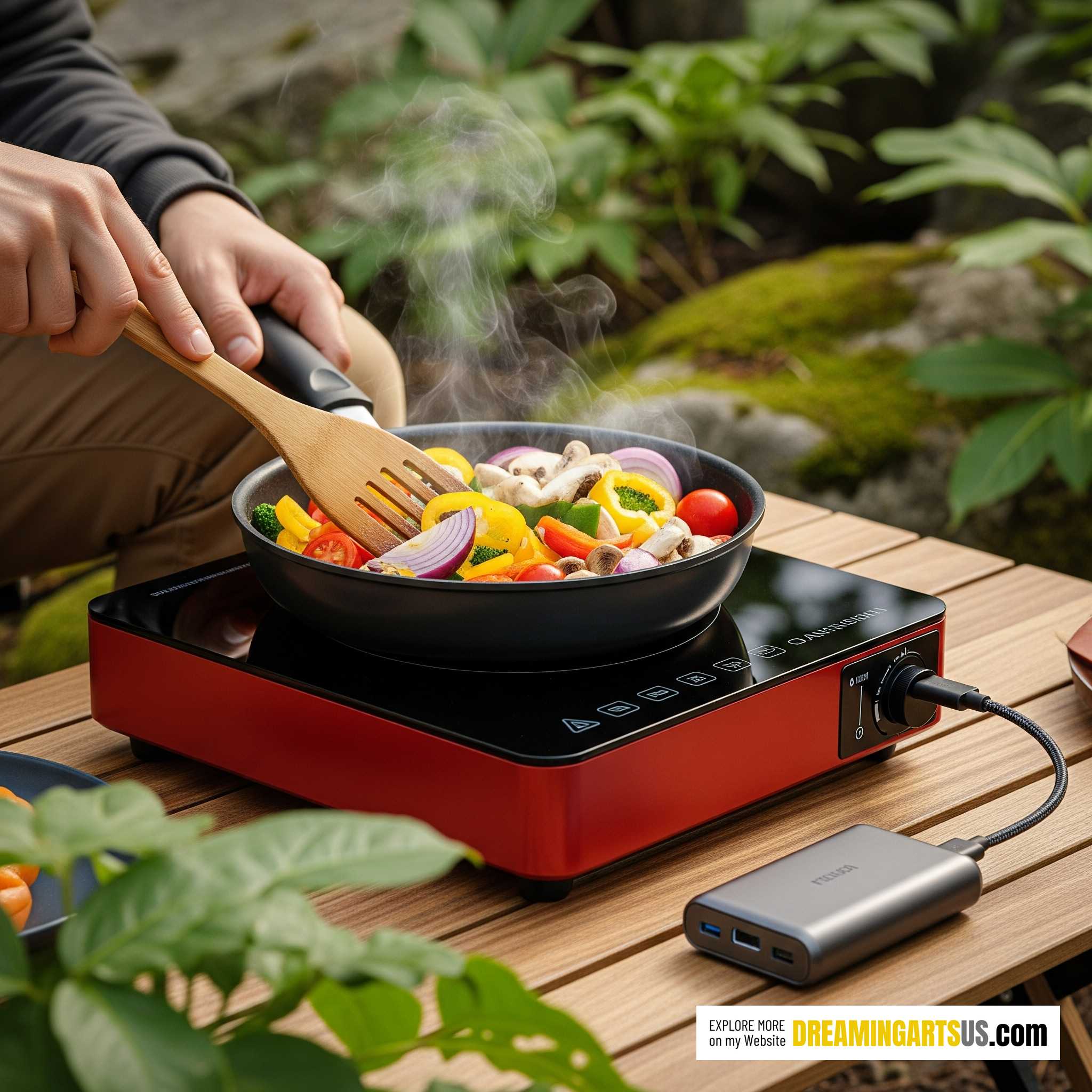
Top Features to Look for in Battery Powered Camping Stoves
When shopping for your ideal stove, here are some key features to consider:
- Power Output (Wattage): Determines how fast you can boil water or cook food. Look for stoves with at least 100–200 watts for efficiency.
- Battery Compatibility: Check whether it runs on built-in batteries, external USB power banks, or solar options.
- Portability: Compact and foldable designs are best for backpacking.
- Heat Control: Multiple cooking levels (low, medium, high) give you better control over cooking styles.
- Durability: Materials like stainless steel, aluminum, or tempered glass tops last longer.
- Cooking Surface Size: Ensure it’s wide enough for your preferred pots and pans.
Best Situations to Use Battery Powered Camping Stoves
- Backpacking: Ultra-lightweight models fit into small packs.
- Van Life & RVs: Safe to use indoors without gas.
- Picnics & Outdoor Gatherings: Quick setup for casual meals outdoors.
- Emergency Preparedness: Great backup cooking method during power outages.
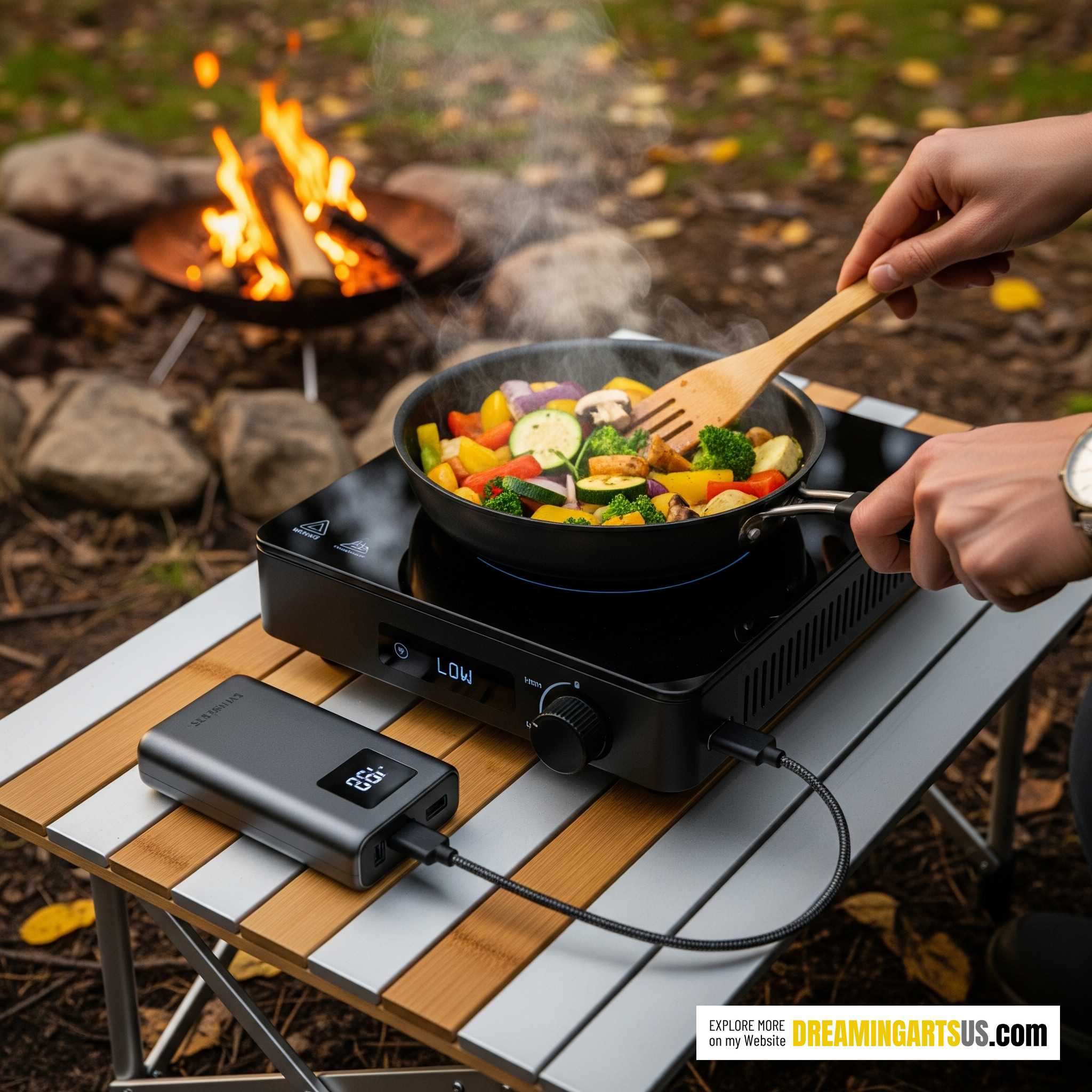
Real User Experiences: Cooking With Battery Powered Camping Stoves
Many adventurers have switched to Battery Powered Camping Stoves and rave about their efficiency. Imagine brewing fresh coffee by a lakeside at sunrise or stir-frying vegetables at a forest campsite without the hassle of collecting wood or lighting gas burners.
Users often highlight:
- Quick heat-up times compared to traditional methods.
- Compactness, especially for those hiking long distances.
- Versatility, allowing them to cook everything from eggs and bacon to pasta and stir-fry vegetables.
- Peace of mind, since there’s no need to store or transport fuel canisters.
Comparing Battery Powered Camping Stoves vs. Traditional Gas Stoves
When deciding between Battery Powered Camping Stoves and traditional gas stoves, you’re weighing eco-friendly innovation against proven reliability. Here’s a breakdown of what each brings to the table:
1. Power & Heating Efficiency
- Traditional gas stoves deliver fast, high heat—some reach up to 20,000 BTU—ideal for boiling water quickly or stir-frying with power.
- Battery-powered (especially induction) units are highly efficient, transferring heat directly to the cookware. Some campers report faster boil times due to less heat loss in windy or cold conditions.
2. Portability & Fuel Logistics
- Gas stoves require carrying fuel cans, which add weight and must be replaced as you go. However, using bulk propane tanks with adapters can reduce cost and waste.
- Battery Powered Camping Stoves replace bulky fuel with lighter power banks or solar setups. While extra batteries are smart for extended trips, it’s still a lighter system overall.

3. Environmental & Safety Considerations
- Gas stoves burn fossil fuels; in windy weather heat is lost, gas emits pollutants, and even idle stoves can leak methane.
- Battery stoves allow for renewable energy usage (like solar) and generate no combustion byproducts—making them far cleaner and safer, especially indoors.
4. Ease of Use & Maintenance
- Gas models are time-tested: instant flame, adjustable heat, and widely familiar controls. But they require fuel, have potential leaks, and involve handling pressurized canisters or fuel lines.
- Battery stoves are as simple as plug and play, with digital or knob controls, flat induction surfaces, and easy cleaning. Just keep batteries charged and cables safe.
5. Cold Weather Performance
- Gas stoves—especially butane models—suffer in cold temperatures, losing pressure and efficiency.
- High-voltage battery stoves maintain consistent performance even in chilly conditions, making them reliable year-round.
6. Cost Dynamics
- Gas stoves tend to be affordable initially, but recurring costs for fuel cans add up over time.
- Battery stoves may have higher upfront costs, especially with solar-ready accessories, but renewable charging and zero fuel purchases offer long-term savings—and green bonus points.
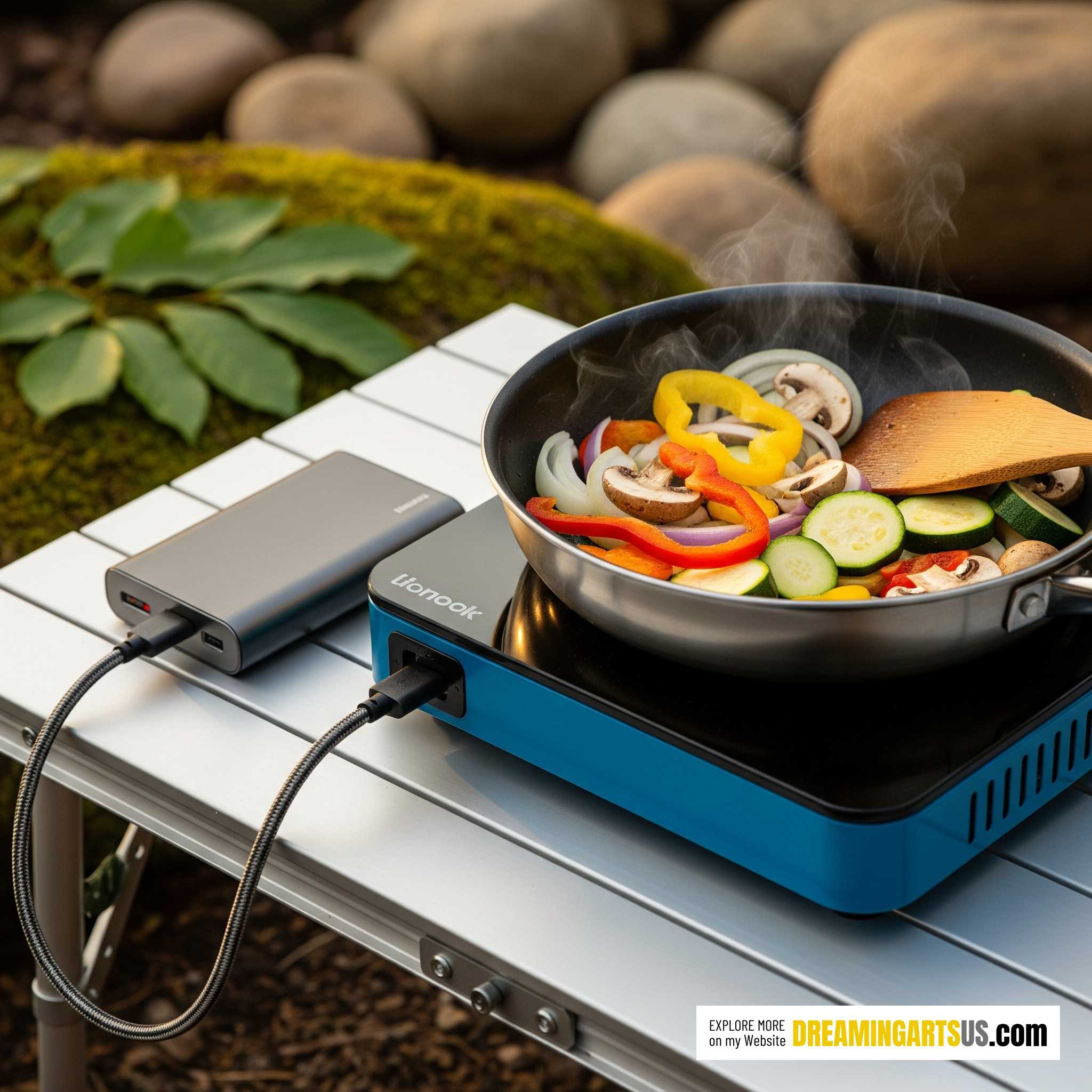
7. User Perspective (Reddit Insight)
An outdoor enthusiast shared on Reddit:
“A 120V portable plate has much lower BTU output than a 20,000 BTU propane stove… induction is faster than gas to boil water… and safer to use inside — no carbon monoxide risk.”
This real-world observation captures the trade-offs clearly: gas brings brute force; batteries bring precision, clean energy, and indoor-safe cooking.
Comparison at a Glance
| Feature | Battery Powered Camping Stoves | Traditional Gas Stoves |
|---|---|---|
| Heating Power | Efficient, direct heat; great in wind/cold | High BTU, fast heat output |
| Weight & Portability | Lightweight; needs batteries instead of fuel | Lighter stoves but carry fuel tanks |
| Environmental Impact | Eco-friendly with solar charging | Fossil fuel emissions, potential leaks |
| Safety Indoors | Safe, no open flame or combustion | Risk of CO, fire hazard if used improperly |
| Ease of Use | Simple plug-and-play, easy cleanup | Familiar flame, but gas handling required |
| Cold Weather Use | Stable performance in low temps | Efficiency drops in cold, especially butane |
| Cost Over Time | Higher start cost; low operating cost | Lower purchase cost; ongoing fuel expenses |
Refer to similar product models: Click here
Maintenance & Care Tips
To keep your stove in great shape:
- Clean after every use: Wipe the cooking surface with a damp cloth.
- Store batteries properly: Keep them away from moisture and extreme heat.
- Check connections: Ensure cables and USB ports remain undamaged.
- Charge fully before trips: Avoid running out of power mid-cooking.
The Future of Camping: Smart and Sustainable Cooking
The future of Battery Powered Camping Stoves is exciting. Expect stoves with Bluetooth controls, built-in battery indicators, fast charging, and even smart cooking presets. Pairing these stoves with solar technology will only make outdoor cooking more sustainable.
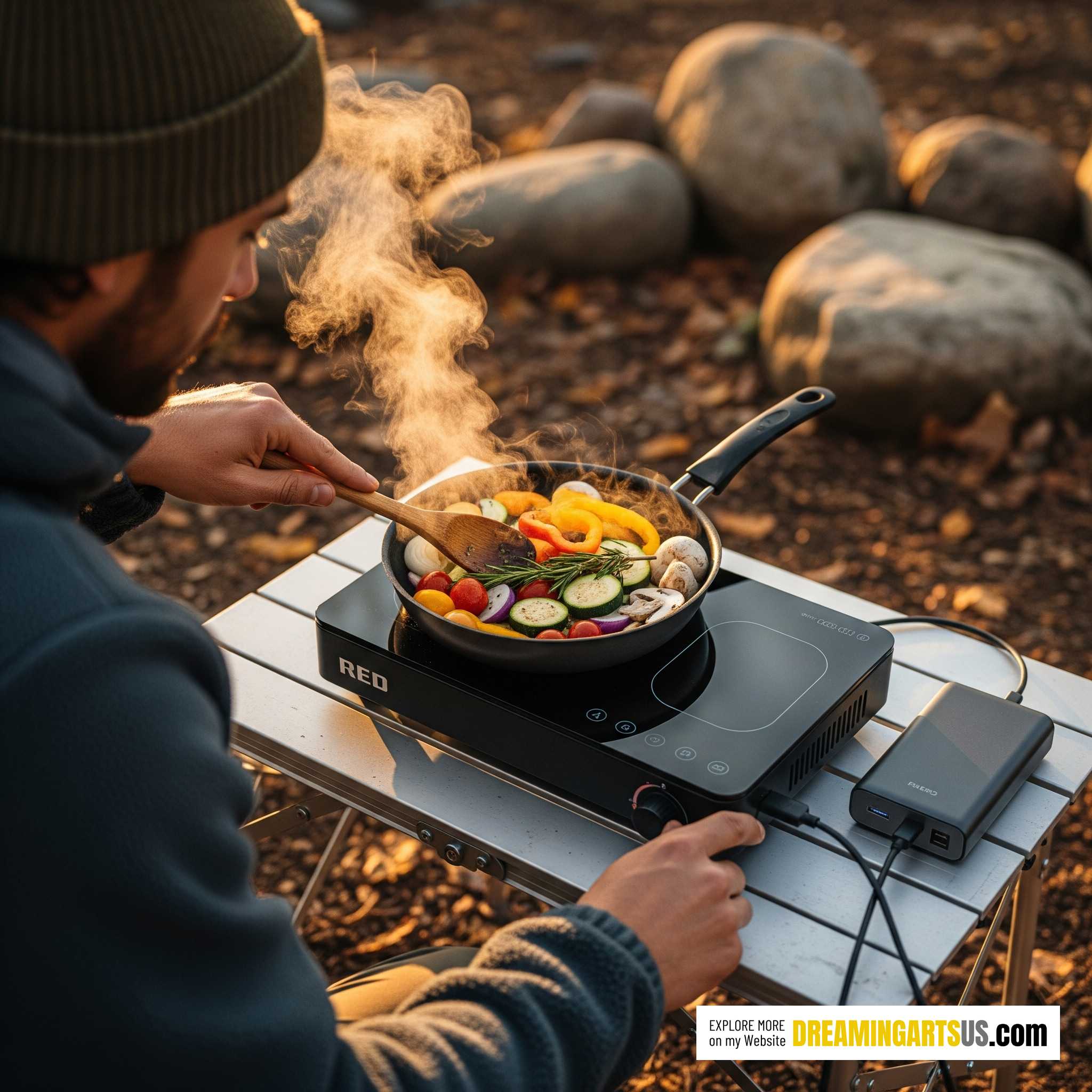
As camping merges with technology, these stoves represent the perfect balance between rugged adventure and modern convenience.
Frequently Asked Questions About Battery Powered Camping Stoves
1. How do Battery Powered Camping Stoves actually work?
Battery Powered Camping Stoves use induction or electric heating coils powered by rechargeable batteries, power banks, or solar generators. Unlike gas stoves, which rely on combustion, these stoves transfer electricity into heat directly to the pan or pot. Some models use induction technology that requires compatible cookware (with a flat, magnetic base).
2. How long can a battery power a camping stove?
This depends on the stove’s wattage and the capacity of your battery pack. On average, a 100W power bank can run a stove for about 1–2 hours of cooking. Larger solar generators or high-capacity lithium-ion batteries can extend this time to 3–4 hours or more. Many campers carry extra power banks for longer trips.
3. Can I charge these stoves with a solar panel?
Yes, most models are designed to pair seamlessly with portable solar panels. You can connect your solar panel to a compatible battery pack or power bank during the day, then use that stored energy to cook meals at night. This makes Battery Powered Camping Stoves perfect for eco-friendly and off-grid adventures.
4. Are these stoves safe to use inside tents or vans?
Absolutely. Since there is no open flame or fuel combustion, they do not produce harmful gases like carbon monoxide. However, it’s still recommended to use them in ventilated spaces to prevent overheating and ensure airflow around the battery and cooking surface.
5. Do they get as hot as gas stoves?
Yes. High-quality Battery Powered Camping Stoves can reach similar temperatures to traditional propane or butane burners. Some can boil water in just a few minutes, and models with 150–200W or higher are excellent for stir-frying, frying meats, or simmering stews.
6. What type of cookware is compatible with these stoves?
For induction-based stoves, you’ll need pots and pans with a flat, magnetic bottom (usually stainless steel, cast iron, or some aluminum pans with induction-ready bases). Standard electric coil stoves are more versatile and work with most cookware.
7. How heavy are Battery Powered Camping Stoves?
Most weigh between 1–3 pounds (0.5–1.5 kg), making them lighter than carrying extra gas canisters. The size and weight vary depending on whether the stove has a built-in battery or relies on an external power source.
8. What happens if it rains while using one?
Most models are not waterproof, so they should be used under shelter in wet weather. However, because they don’t rely on an open flame, they are much easier to manage in windy or damp conditions compared to gas stoves. Always keep the power bank and cables dry.
The outdoors no longer means compromising on the quality of your meals. Battery Powered Camping Stoves combine technology, portability, and eco-friendliness, redefining how we cook in nature. From lightweight backpacking adventures to family camping trips, these stoves deliver convenience and performance that fuel-based stoves can’t match.
Compact, clean, and incredibly efficient, they’re more than just a trend—they’re the future of outdoor cooking. If you’re ready to elevate your next adventure, investing in Battery Powered Camping Stoves might just be the smartest move you’ll ever make.




